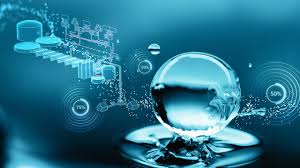Water scarcity affects over 2 billion people worldwide, making efficient water management more critical than ever. Fortunately, cutting-edge technologies are transforming how we monitor, treat, and distribute this precious resource. From AI-powered leak detection systems to advanced treatment processes, modern innovations are helping cities, industries, and communities optimize their water usage while reducing waste and environmental impact.
Smart Sensors and IoT Transform Water Monitoring
Internet of Things (IoT) devices have revolutionized water infrastructure monitoring. Smart sensors placed throughout distribution networks continuously track water pressure, flow rates, and quality parameters in real-time. These devices can detect leaks within hours rather than weeks, preventing millions of gallons of water loss annually.
Cities like Barcelona have implemented comprehensive smart water networks that reduced water consumption by 42.8% over two decades. The system uses thousands of sensors to monitor everything from pipe conditions to water quality, enabling proactive maintenance and rapid response to issues.
Water quality sensors also play a crucial role in ensuring safe drinking water. These devices can detect contaminants, pH levels, and bacterial presence instantly, alerting operators to potential health risks before they reach consumers.
Artificial Intelligence Optimizes Water Distribution
Machine learning algorithms are making water distribution systems smarter and more efficient. AI analyzes historical usage patterns, weather forecasts, and demographic data to predict demand with remarkable accuracy. This predictive capability allows water utilities to adjust supply proactively, reducing energy costs and preventing shortages.
Predictive maintenance powered by AI helps identify equipment failures before they occur. By analyzing data from pumps, valves, and treatment facilities, these systems can schedule maintenance during optimal times, minimizing service disruptions and extending equipment lifespan.
Advanced leak detection algorithms can pinpoint the exact location of pipe failures using acoustic sensors and pressure monitoring. Some systems achieve accuracy within just a few meters, dramatically reducing the time and cost associated with repairs.
Advanced Treatment Technologies Tackle Complex Challenges
Modern water treatment technologies are addressing increasingly complex contamination challenges. Membrane bioreactors combine biological treatment with advanced filtration, producing high-quality effluent suitable for reuse applications. These systems are particularly effective for treating complex industrial wastewater streams.
Reverse osmosis technology has become more energy-efficient and cost-effective, making desalination a viable option for water-scarce regions. New membrane materials and energy recovery systems have reduced the energy requirements by up to 60% compared to older technologies.
For specialized applications like oil and gas wastewater treatment, innovative approaches such as electrocoagulation and advanced oxidation processes are removing contaminants that traditional methods cannot handle effectively. These technologies are essential for managing produced water from hydraulic fracturing operations.
Digital Twins Create Virtual Water Systems
Digital twin technology creates virtual replicas of water infrastructure, allowing operators to simulate different scenarios and optimize performance. These digital models incorporate real-time data from sensors throughout the system, providing unprecedented insights into system behavior.
Water utilities use digital twins to test the impact of infrastructure changes, predict system performance under various conditions, and train operators without risking actual equipment. This technology has proven particularly valuable for large, complex water networks where physical testing would be impractical or expensive.
Blockchain Ensures Water Data Security and Transparency
Blockchain technology is emerging as a solution for water data management and trading. Secure, transparent ledgers can track water usage, quality measurements, and treatment processes, creating an immutable record of water system operations.
Some regions are experimenting with blockchain-based water trading platforms that allow communities and businesses to buy and sell water rights securely and transparently. This technology could revolutionize how water resources are allocated and managed in water-scarce areas.
Mobile Apps Empower Consumer Participation
Smartphone applications are connecting consumers directly to water management systems. These apps allow users to monitor their water consumption in real-time, receive alerts about service interruptions, and report issues like leaks or water quality problems.
Gamification elements in water apps encourage conservation by allowing users to set goals, track progress, and compare usage with neighbors. Some utilities report up to 15% reduction in residential water consumption after implementing these engagement tools.
Remote Sensing Monitors Water Resources at Scale
Satellite technology and drones provide unprecedented visibility into water resources across vast areas. Remote sensing can monitor reservoir levels, detect algae blooms, assess crop water needs, and identify potential contamination sources from space.
This technology is particularly valuable for managing agricultural water use, which accounts for 70% of global freshwater consumption. Farmers can optimize irrigation based on precise soil moisture measurements and weather predictions, reducing water waste while maintaining crop yields.
Building a Water-Secure Future Through Innovation
The convergence of these technologies is creating more resilient, efficient, and sustainable water management systems. As climate change intensifies water challenges worldwide, these innovations provide essential tools for adaptation and conservation.
Success requires collaboration between technology providers, water utilities, regulatory agencies, and communities. By embracing these modern solutions and investing in digital infrastructure, we can build water systems capable of meeting growing demand while protecting this vital resource for future generations.
The transformation is already underway, with early adopters seeing significant improvements in efficiency, cost savings, and service reliability. The question isn’t whether to adopt these technologies, but how quickly organizations can implement them to address mounting water challenges.

